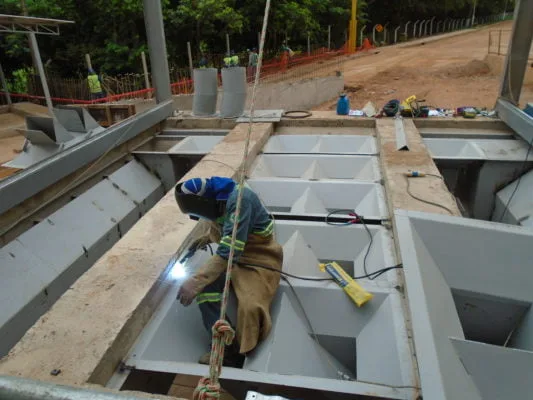.
Are dampers the best option for controlling dust in grain receiving pits?
Definitely not! They are not totally efficient and have a limited shelf life! Get details below.
Controlling dust emission from bulk-product receiving pits is important for the health of people in the area and for protecting the environment. Baffle systems, sometimes referred to as flaps, operate differently than the Wings’ DustControl.
Baffles normally consist of long strips of steel with hinges on one side of the sheet attaching it to the pit grate. These baffles have springs that secure them in a horizontal position against the pit grate. In this closed position, the baffles impede dust from escaping from the pit. During unloading, the product falling from the transport vehicle will force open these baffles and the product entering the pit should prevent the dust from leaving the pit.
.
When unloading is finished, the baffles will close again against the grate. The basic problems with this system are:
-
Dust-laden air exits the pit at the same high velocity as the product entering the pit. The gusts of air demand a barrier of product over the entire area of the flap to prevent the dust from leaving the pit. A baffle is normally a long strip covering a large section of the pit. If there is not product above the entire length of the baffle, dust-laden air will be able to escape through any open space. As the flow of the product diminishes, more and more open spaces will become available for dust to escape.
-
The springs controlling the movement of the baffles have limited shelve life and lose their elasticity for maintaining the baffles closed, eventually making the baffles ineffective in controlling dust emission.
The DustControl system operates by a different method. The DustControl is composed of modules that are 50 cm (20”) deep with chutes and counterweighted louvers. These are attached to the pit grate. The modules cover the entire receiving pit area and do not allow airflow in or out of the pit when product is not being received.

As product is unloaded from the transport vehicle onto the pit grate, it falls into the modules. As product enters each module, the chute will fill to the point that the counterweight opens and the product will fall into the pit at a controlled velocity, maintaining the chute full of product without slowing the velocity of the unloading process. Dust-laden air, displaced from the pit by the product, has only one exit. The dust laden air must pass through the column of product in the chutes of the modules. As the air passes through the column of product it loses its velocity to the point that the air can no longer carry dust and the dust is deposited with the product in the chute. As unloading finishes and the chutes are emptied, their louvers close, blocking airflow. There are no open spaces to allow dust to escape.
In addition, the air having lost its velocity as it passes through the product in the chute is no longer capable of spreading the dust circulating above the pit grate. This dust will now stay with the product as it falls from the vehicle and enter the pit.
The DustControl has an undetermined shelf life since the first systems installed by Wings in 2004 are still in operation and have never needed maintenance.
The secret of the DustControl system is using the product effectively to block dust emissions from the receiving pit.
..





